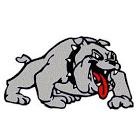(View Complete Item Description)
Students construct sets of numbers up to 10, write the numerals up to 10, and count up to 10 rationally. They use ten frames and also make bean sticks.
I used this lesson to first build my students understanding of working up to 10. However, I knew they knew how to make 10, so to adjust this particular lesson, I then built on from this lesson. We used the strategy of counting on to work into teen numbers (designing the concept of ten and extra ones). This lesson mat with the fingers was great because kids could make their ten with the hands, but then also see the extra ones. I would only use this to make combinations up to 10, build the concepts of a group of ten and some extra ones, and counting on. I did not use the numeral cards as we were more focused on counting out groups of numbers, counting on from that group, building a ten, and seeing extra ones.
Material Type:
Activity/Lab,
Learning Task
Author:
Grace M. Burton




















